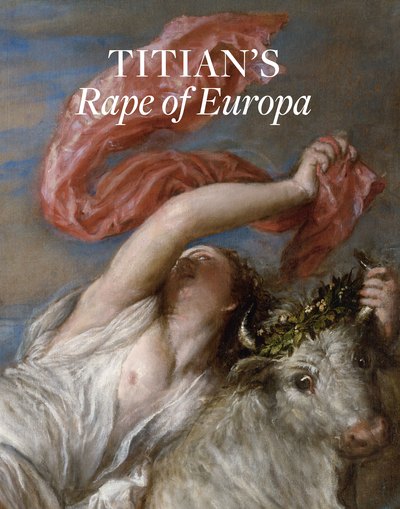- EAN13
- 9781913645007
- Éditeur
- Paul Holberton Publishing
- Date de publication
- 21 janvier 2021
- Nombre de pages
- 80
- Dimensions
- 23,7 x 19,5 x 0,8 cm
- Poids
- 306 g
- Langue
- fre
Titian's Rape Of Europa
Silver Nathaniel
Paul Holberton Publishing
Prix public : 20,00 €
Dubbed “a mighty poet” by American author Henry James, Titian remains one of the most celebrated painters in Western art. Since his death in 1576, the artist’s reputation has never waned. In Gilded Age America, Titian paintings becamethe peerless prizes of leading collectors and quickly rose to the top of Isabella Stewart Gardner’s wish list. In 1896, she landed his masterpiece, The Rape of Europa. It became the sole example of his celebrated cycle of poesie outside of Europe, inspired an entire gallery in her newly built museum, and contributed to England’s national outcry over the loss of its art treasures. This book – the first dedicated to Europa – tells the painting’s story in Gardner’s time, in Titian’s, and offers rare insights into the artist’s virtuoso technique. Nathaniel Silver, William and Lia Poorvu Curator of the Collection, tells the acquisition story behind The Rape of Europa (1562), one of the most influential and iconic Renaissance paintings in America. The purchase of Titian’s masterpiece from an English aristocrat marked the beginning of a new phase in Gardner’s business relationship with scholar and art dealer Bernard Berenson and made her the envy of every art collector in the United States. While Henry James nicknamed Isabella “daughter of Titian” and all of Boston fell at her feet, European contemporaries took note of their rapidly disappearing national patrimony. The same celebrity that would make Europa the crown jewel of Boston’s newest museum fueled the widely publicized debate over England’s artistic heritage. “American despoilers” became the rallying cry of British museum directors, curators, and scholars who cast their country as the victim of New World rapacity, and Isabella its most brilliant villain. This volume further explores Europa in Titian’s own time. Here the legendary painter laid claim to the power of poetic invention, creating the last of the six mythological canvases to reach Philip II in three years between 1559 and 1562. Described by the artist as poesie (literally “painted poetries”), these celebrated pictures reimagined stories from antiquity and explored the epic consequences of encounters between gods and mortals. Titian’s staggeringly original interpretations solicited comparisons with Ovid’s poetry and ancient art. Completed over more than a decade, they fulfilled part of a larger agreement to furnish the king with paintings both secular – and highly sensual in character – as well as altarpieces of religious subjects. Published here for the first time, dramatically enlarged details of the composition demonstrate Titian’s deft touch and dazzlingly technical accomplishment. These bravura passages recently revealed by the painting’s comprehensive cleaning – the fi rst since its arrival in America – are accompanied by commentary from the conservator, Gianfranco Pocobene, who returned Europa to its original glory.


















